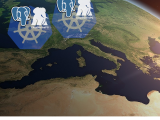Making the world my single point of failure with PostgreSQL
The upcoming CloudNativePG 1.24 introduces a game-changing feature: the ability to declaratively manage PostgreSQL cluster switchover across cloud regions or different Kubernetes clusters. This advancement enables the seamless demotion of a primary cluster and the promotion of a replica cluster in another region without the need to re-clone the former primary. This innovation significantly revolutionises database management practices, enhancing efficiency and reliability in multi-region and multi-cluster environments.
CloudNativePG, traditionally confined to single Kubernetes clusters, is now expanded its functionality to support distributed PostgreSQL topologies across multiple regions. This enhancement leverages declarative configurations to manage coordinated promotions, ensuring a single primary instance at any time. Based on PostgreSQL’s primary/standby architecture, this setup is designed to maintain operational continuity and cater to various deployment scenarios, including hybrid and multi-cloud environments. The new capabilities significantly improve high availability and disaster recovery by mitigating the risks associated with single points of failure in PostgreSQL deployments within Kubernetes.









